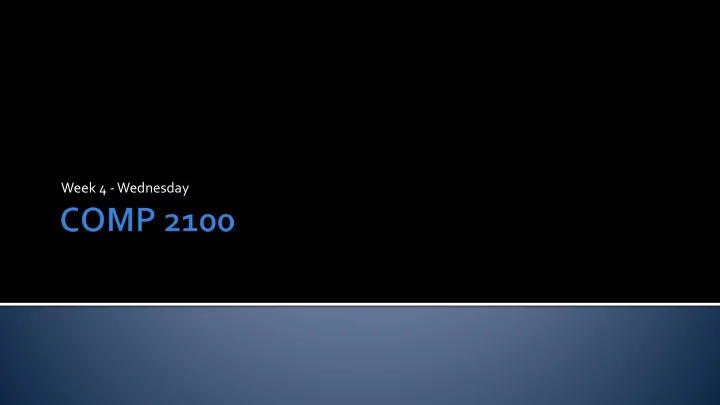

Week 4 -Wednesday
What did we talk about last time? Finished array implementation of queues Started linked lists
I'm glad you asked They allow a collection to be used in a foreach loop So, what's a foreach loop? public static int sum( int[] array ) { int total = 0; for( int value: array ) total += value; return total; } It allows you to read (but not change) each value in a list
Foreach loops work for any iterable list of any type public static double weigh(Wombat[] list) { double total = 0.0; for( Wombat wombat: list ) total += wombat.getWeight(); return total; } public static double weigh(ArrayList<Wombat> list) { double total = 0.0; for( Wombat wombat: list ) total += wombat.getWeight(); return total; } public static double weigh(LinkedList<Wombat> list) { double total = 0.0; for( Wombat wombat: list ) total += wombat.getWeight(); return total; }
Node consists of data and a single next pointer Advantages: fast and easy to implement Disadvantages: forward movement only head 23 47 58 X
Node consists of data, a next pointer, and a previous pointer Advantages: bi-directional movement Disadvantages: slower, 4 pointers must change for every insert/delete X head 23 47 58 X tail
You are given a singly linked list It may have a loop in it, that is, a node that points back to an earlier node in the list If you try to visit every node in the list, you’ll be in an infinite loop How can you see if there is a loop in a linked list?
Let’s try a simple definition for a singly linked list: public class LinkedList { private static class Node { public int data; public Node next; } private Node head = null; public int size = 0; … }
Assuming that the list has been kept in order
Implementation of a linked list with an iterator Circular linked lists and skip lists Implementing a stack with a linked list Implementing a queue with a linked list Keep reading section 1.3
Keep reading section 1.3 Finish Assignment 2 Due Friday by midnight Keep working on Project 1 Don't fall behind!
Recommend
More recommend